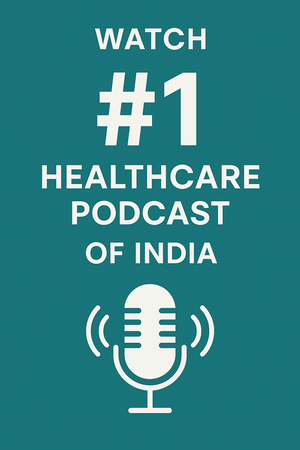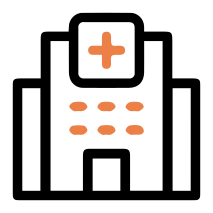Cancer, a complex array of diseases, manifests differently depending on its origin within the body. Recognizing the early signs and symptoms associated with specific types of cancer can be crucial for timely diagnosis and treatment. Let’s explore the common indicators for each type of cancer based on its site of origin:
1. Breast Cancer:
Breast cancer is one of the most common cancers among women worldwide, but it can also affect men. While it primarily originates in the breast tissue, it can spread to nearby lymph nodes and other parts of the body. Early detection through screening and awareness of symptoms is crucial for effective treatment.
- Lump in the breast or armpit: A palpable lump or thickening in the breast tissue or underarm area.
- Changes in breast shape or size: Swelling, distortion, or asymmetry in one or both breasts.
- Nipple changes: Nipple discharge (other than breast milk), inversion, or changes in nipple appearance.
- Breast pain or tenderness: Persistent discomfort or pain in the breast or nipple area.
- Skin changes: Redness, dimpling, or puckering of the breast skin.
- Nipple rash or crusting: Persistent rash or flaking skin around the nipple.
- Swollen lymph nodes: Enlarged lymph nodes under the arm or around the collarbone.
- Unexplained breast swelling: Sudden or gradual enlargement of one breast.
- Nipple retraction: Nipple pulling inward or becoming inverted.
- Breast warmth or itching: Unexplained warmth or itching sensation in the breast area.
2. Lung Cancer:
Lung cancer primarily affects the lungs, where abnormal cells grow uncontrollably, forming tumors. It is often associated with smoking but can also occur in non-smokers due to various factors such as environmental exposure to carcinogens. Early detection and smoking cessation are vital for improving outcomes.
- Persistent cough: Chronic cough that worsens over time, often with blood-streaked sputum.
- Shortness of breath: Difficulty breathing, wheezing, or chest tightness, especially with exertion.
- Chest pain: Dull, aching pain in the chest, shoulders, or back that worsens with deep breathing or coughing.
- Unexplained weight loss: Significant and unintentional weight loss despite normal eating habits.
- Fatigue: Persistent tiredness or weakness.
- Hoarseness: Changes in voice, such as hoarseness or raspiness.
- Persistent infections: Recurrent respiratory infections, such as bronchitis or pneumonia.
- Difficulty swallowing: Dysphagia or feeling like something is stuck in the throat.
- Swelling in the face or neck: Swelling or enlargement of the face or neck.
- Clubbing of fingers: Bulbous enlargement of the fingertips.
3. Colorectal Cancer:
Colorectal cancer affects the colon or rectum, with most cases starting as polyps that can turn cancerous over time. It is one of the leading causes of cancer-related deaths worldwide. Screening tests such as colonoscopies can detect and remove polyps before they become cancerous, while awareness of symptoms is essential for early diagnosis.
- Change in bowel habits: Persistent diarrhea or constipation, changes in stool consistency, or feeling of incomplete bowel evacuation.
- Rectal bleeding: Blood in the stool (bright red or dark), bleeding from the rectum, or blood in the toilet after bowel movements.
- Abdominal discomfort: Cramps, gas, bloating, or feeling of fullness in the abdomen.
- Unexplained weight loss: Significant and unintended weight loss without dieting.
- Fatigue: Persistent tiredness or weakness.
- Iron deficiency anemia: Low red blood cell count due to chronic blood loss, resulting in fatigue and weakness.
- Narrow stools: Pencil-thin or ribbon-like stools.
- Persistent abdominal pain: Cramping, discomfort, or pain in the abdomen, often relieved by bowel movements.
- Weakness or fatigue: Generalized weakness or fatigue, especially with anemia.
- Feeling of incomplete bowel evacuation: Sensation of incomplete emptying of the bowels after a bowel movement.
4. Prostate Cancer:
Prostate cancer develops in the prostate gland, which is a small gland in men that produces seminal fluid. It is one of the most common cancers in men, typically affecting older individuals. While many prostate cancers grow slowly and may not cause significant harm, some can be aggressive. Early detection through regular screenings, such as prostate-specific antigen (PSA) tests, can help in timely intervention and management.
- Urinary changes: Frequent urination, especially at night (nocturia), weak urine flow, or difficulty starting or stopping urination.
- Blood in urine or semen: Visible blood in the urine or semen.
- Erectile dysfunction: Difficulty achieving or maintaining an erection.
- Pelvic pain: Discomfort or pain in the pelvic area, lower back, hips, or thighs.
- Bone pain: Pain in the bones, especially the spine, hips, or ribs.
- Weakness or numbness: Weakness or numbness in the legs or feet.
- Difficulty urinating: Straining or pain during urination.
- Urinary retention: Difficulty emptying the bladder completely.
- Fatigue: Persistent tiredness or weakness.
- Loss of bladder or bowel control: Incontinence or difficulty controlling urination or bowel movements.
5. Skin Cancer:
Skin cancer is the abnormal growth of skin cells, typically caused by prolonged exposure to ultraviolet (UV) radiation from the sun or tanning beds. It is the most common type of cancer globally. There are three main types of skin cancer: basal cell carcinoma, squamous cell carcinoma, and melanoma.
- Changes in moles: Asymmetrical moles, irregular borders, changes in color, or diameter larger than a pencil eraser.
- New growths or sores: Non-healing sores, lumps, or lesions that ooze, crust, or bleed.
- Itching or tenderness: Persistent itching, tenderness, or pain in a mole or skin lesion.
- Changes in sensation: Changes in sensation, such as itching, tenderness, or pain in the skin.
- Bleeding or oozing: Spontaneous bleeding or oozing from a mole or skin lesion.
- Scaliness or crusting: Persistent scaliness, crusting, or roughness of the skin.
- Redness or swelling: Persistent redness, swelling, or inflammation around a mole or skin lesion.
- Change in texture: Changes in the texture of the skin, such as becoming thicker or rougher.
- Sores that won’t heal: Non-healing sores or wounds that persist for weeks or months.
- Enlarged lymph nodes: Swollen or tender lymph nodes near the site of a suspicious mole or lesion.
6. Ovarian Cancer:
Ovarian cancer develops in the ovaries, which are part of the female reproductive system. It often goes undetected until it has spread within the pelvis and abdomen, making it challenging to treat. Ovarian cancer is often referred to as the “silent killer” because early symptoms are subtle and easily mistaken for other conditions. Awareness of potential signs and symptoms is crucial for early diagnosis and improved outcomes.
- Abdominal bloating: Persistent swelling or bloating in the abdomen.
- Pelvic discomfort: Pelvic pain, pressure, or discomfort.
- Changes in bowel habits: Constipation, diarrhea, or changes in bladder function.
- Loss of appetite: Decreased appetite or feeling full quickly after eating.
- Unexplained weight loss: Significant and unintentional weight loss without dieting.
- Fatigue: Persistent tiredness or weakness.
- Menstrual changes: Irregular menstrual cycles or postmenopausal bleeding.
- Back pain: Persistent pain in the lower back or pelvis.
- Abnormal vaginal bleeding: Bleeding between periods or after menopause.
- Frequent urination: Increased frequency of urination, especially at night (nocturia).
7. Pancreatic Cancer:
Pancreatic cancer arises in the tissues of the pancreas, an organ located behind the stomach that plays a vital role in digestion and blood sugar regulation. It is often diagnosed at an advanced stage, as early symptoms may be nonspecific or absent.
- Abdominal pain: Dull, aching pain in the upper abdomen that may radiate to the back.
- Unexplained weight loss: Significant and unintentional weight loss without changes in diet or exercise.
- Jaundice: Yellowing of the skin and whites of the eyes, dark urine, or pale stools.
- Loss of appetite: Decreased appetite or feeling full quickly after eating small amounts.
- Nausea and vomiting: Persistent nausea, vomiting, or indigestion.
- Fatigue: Persistent tiredness or weakness.
- New-onset diabetes: Sudden onset of diabetes or unexplained high blood sugar levels.
- Digestive problems: Greasy or floating stools, diarrhea, or difficulty digesting fatty foods.
- Back pain: Pain in the upper back or between the shoulder blades.
- Blood clots: Development of blood clots, especially in the legs.
8. Brain Cancer:
Brain cancer refers to the abnormal growth of cells within the brain or its surrounding tissues. Tumors can arise from various cell types and can be benign (non-cancerous) or malignant (cancerous). The symptoms of brain cancer can vary widely depending on the location, size, and growth rate of the tumor.
- Headaches: Persistent headaches, especially in the morning or worsened by coughing or straining.
- Seizures: New-onset seizures or changes in seizure frequency or severity.
- Nausea and vomiting: Persistent nausea or vomiting, often unrelated to food intake.
- Weakness or numbness: Weakness or numbness in one side of the body, face, arms, or legs.
- Changes in vision: Blurred vision, double vision, or loss of peripheral vision.
- Difficulty speaking or understanding: Slurred speech, difficulty finding words, or understanding language.
- Personality or behavior changes: Changes in mood, behavior, personality, or cognitive function.
- Loss of balance or coordination: Difficulty walking, clumsiness, or loss of coordination.
- Fatigue: Persistent tiredness or weakness.
- Memory problems: Difficulty remembering things or concentrating.
9. Leukemia:
Leukemia is a type of cancer that affects the blood and bone marrow, resulting in the overproduction of abnormal white blood cells. These abnormal cells crowd out healthy blood cells, leading to impaired immune function, anemia, and bleeding disorders. Leukemia can be acute (rapidly progressing) or chronic (slowly progressing), with various subtypes based on the type of white blood cell affected.
- Fatigue: Persistent tiredness, weakness, or lack of energy.
- Frequent infections: Increased susceptibility to infections, such as fever, chills, or sore throat.
- Easy bruising or bleeding: Unexplained bruises, nosebleeds, or bleeding gums.
- Swollen lymph nodes: Enlarged, painless lymph nodes, especially in the neck, armpits, or groin.
- Bone pain: Pain or tenderness in the bones, especially the ribs or sternum.
- Pale skin: Paleness or pallor due to anemia.
- Shortness of breath: Difficulty breathing, especially with exertion.
- Fever or night sweats: Persistent fever or night sweats without any apparent cause.
- Weight loss: Unintended weight loss despite normal eating habits.
- Headaches: Persistent headaches, especially with vomiting or altered mental status.
10. Lymphoma:
Lymphoma is a cancer that originates in the lymphatic system, which is part of the body’s immune system. It involves abnormal growth of lymphocytes, a type of white blood cell, leading to the formation of tumors in lymph nodes and other lymphoid tissues. Lymphoma can be classified into two main types: Hodgkin lymphoma and non-Hodgkin lymphoma, each with distinct characteristics and treatment approaches.
- Swollen lymph nodes: Enlarged, painless lymph nodes, especially in the neck, armpits, or groin.
- Fever: Persistent fever without any obvious cause.
- Unexplained weight loss: Significant weight loss without changes in diet or exercise.
- Night sweats: Profuse sweating, especially at night, unrelated to room temperature or exertion.
- Fatigue: Persistent tiredness or weakness.
- Itching: Generalized itching, especially without rash or other apparent skin changes.
- Loss of appetite: Decreased appetite or feeling full quickly after eating.
- Breathlessness: Shortness of breath, especially with minimal exertion.
- Swelling: Swelling or enlargement of the abdomen, face, or extremities.
- Pain: Persistent pain or discomfort, especially in the abdomen, chest, or bones.
Recognizing these signs and symptoms is the first step towards early detection and effective treatment. If you experience any persistent or unusual symptoms, consult a healthcare professional for proper evaluation and diagnosis.
Remember, early detection saves lives.
HospitalandDoctors.com is your go-to resource for comprehensive information on hospitals and medical professionals. Discover top-rated facilities and connect with leading specialists like Dr. Ashwani Kumar Sachdeva, a respected oncologist known for his compassionate care and expertise in cancer treatment. With detailed profiles and patient reviews, HospitalandDoctors.com helps you make informed healthcare decisions with confidence.






 and then
and then